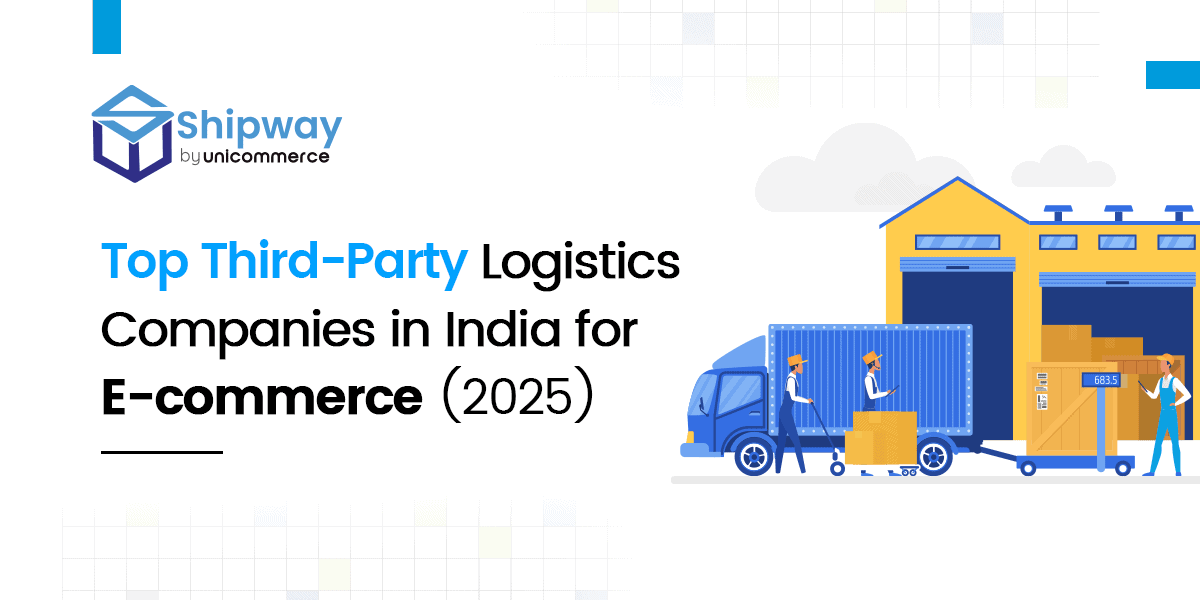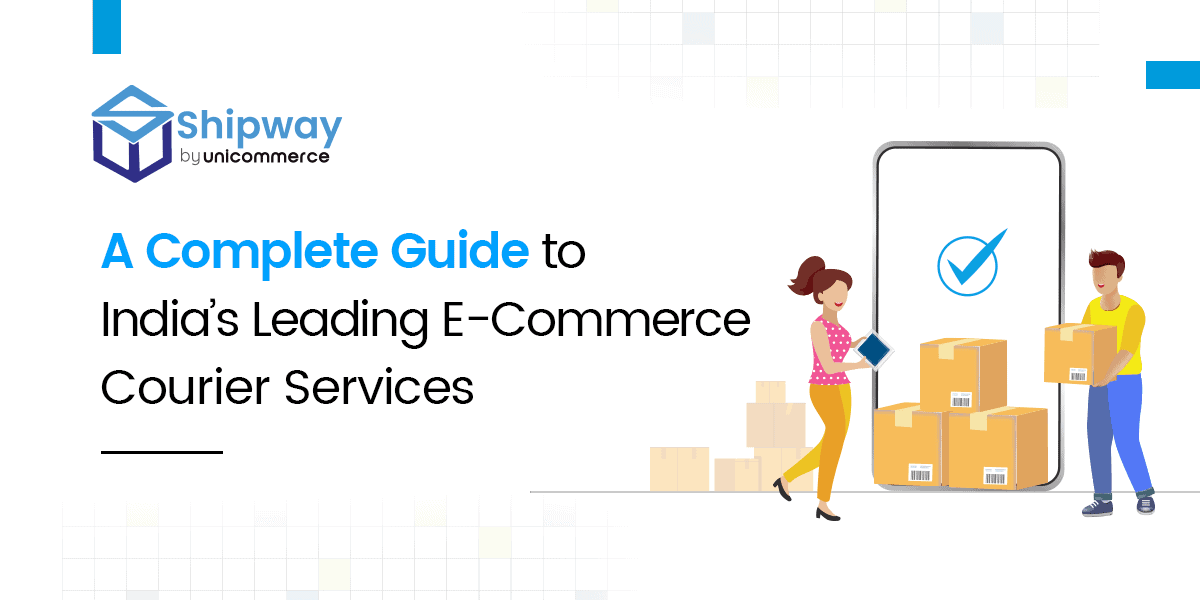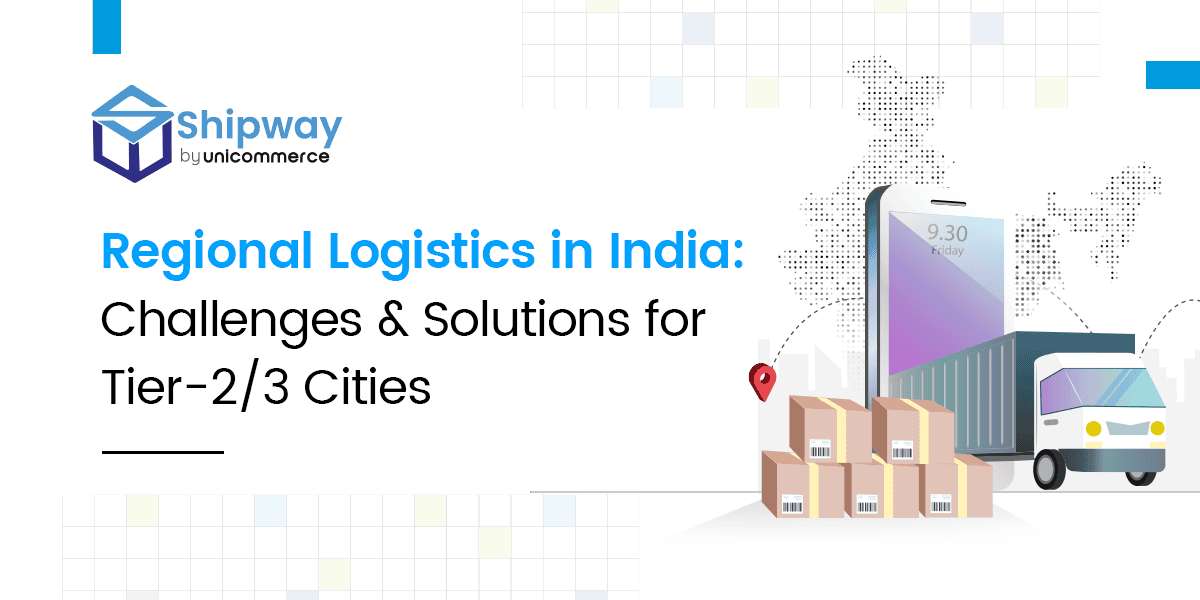A lot of D2C brands are embracing automation in their day-to-day operations, from logistics to customer communication, for one main reason: a better customer experience. After all, happy customers are returning customers!
There is another major automation, necessary for brands: Return Automation.
Return automation is nothing but the use of automated processes to make your reverse logistics as smooth as butter, be it tracking your returns, allowing smooth exchanges, or refunding customers!
Why is return automation important for D2C brands?
Statista reported that by the end of 2022, 15.8% of products ordered were returned in India!
A frustrating return process can turn a happy customer into a lost one, like a customer who cannot return a damaged product, a person who is not allowed to exchange their product for a bigger size, or a person whose refund is taking too long.
A smooth return experience builds trust and encourages customers to shop with you again. That’s where return automation comes in. It eliminates the hassle of manual processing, reduces errors, and speeds up refunds.
Here is what you need to automate your return operations:
1. A Foolproof Return Policy
One of the few things customers tend to do after adding products to their cart is check the return and refund policy on your website. This may make or break the chance that your customers will shop from you or not, because good return policies give customers a sense of safety so they can shop without worrying about losing money in case of a faulty product.
Good return policies are not just a great conversion move but also a proven way to retain customers and reduce any negative reviews you might get for a tedious return process.
A perfect return policy should clearly communicate everything so that a customer does not have to go to your support team just for a return. Here are things that should definitely be in a return policy:
- Mention which items are final sale items and which may be returned.
- Set a period within which the returns and exchanges are valid.
- Clearly mention if you issue refunds or give store credits in case of refunds and in case of exchanges, mention if you provide store credit in case the required product is not in stock
- Specify the conditions of return, such as tagged intact, original packaging, etc., and that no visible wear or use should be present
- Give a stipulated range of days within which they can expect a refund or exchange
- Mention if you offer free return shipping or charge a fee.
- Clearly give a step-by-step process for how to initiate the return or exchange process.
2. Third- Party Reverse Logistics Partner
When your brand starts scaling and your order volumes increase, so do the returns. This is when you get a 3PL partner like Shipway!
But what makes a 3PL partner ideal for you? It’s these factors:
- Efficient: When you get a large volume of returns, there are several things to manage, like approving or rejecting them, tracking the status of each return request, allowing exchanges, automating refunds, and most importantly, a branded returns page, so that a customer can easily request a return without leaving your website!
If a logistics partner helps you do all of this and more, then it is ideal to manage your returns.
- Price: Pricing is another factor that determines if a logistics partner is suitable for your business or not. So, finding a fairly priced return partner is another thing to keep in mind. A 3-PL partner like Shipway is the best for affordable returns automation as their return solution starts at just Rs1800/month.
- Reachability: Reachability is basically how many pin codes your logistics partner reaches to ensure that all your customers can return their products from their doorstep without any difficulty.
Shipway is available across 29000+ pin codes, making sure that all your customers can make returns efficiently. - Unified Solution: The 3-PL partner you choose must be a unified solution, this should not only allow returns but also exchanges, where you do not lose your money when a product is exchanged with another, as in case of a return and offer quick refunds to maintain customer trust in your brand.
- Integrations: Another factor that makes a good returns partner is the integrations they have. These can be courier integrations with the top couriers in your area like Bluedart, DTDC, etc for easy returns, platform integrations like Shopify to easily sync your returns, or payment gateway integrations like Razorpay, Cashfree, etc. for quick refunds.
- Tracking: After a return request is approved, it is imperative to check the status of the return, whether it’s picked up, in transit, or has reached the warehouse.
All of this becomes difficult when the volume of returns is very high. Here, an e-commerce returns solution like Shipway is very helpful because, with Shipway you can view the status of each and every returned parcel.
Shipway also helps you send regular alerts to customers over WhatsApp and SMS to keep them updated about the status of their refund in case of returns or products in case of exchanges.
5 Steps to turn your e-commerce returns into a customer magnet
1. Determine how your customers communicate with you:

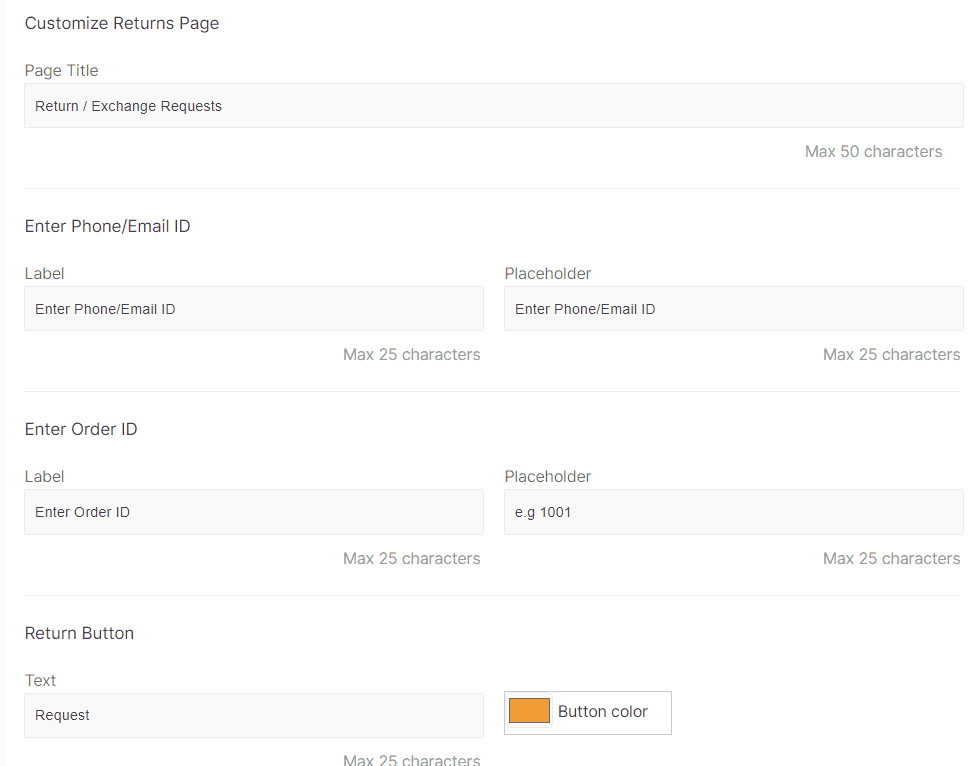
One of the first steps would be to determine whether you want to offer an in-order return where you wouldn’t need a separate returns page and can simply request a return from the orders page.
Another option is having a separate returns page where your customer will place a return request, which you can approve manually or auto-approve from your dashboard.
Shipway allows you to edit the page title, and ask the customer for their order ID, email ID, and phone number. All of these you can edit, along with button color and preview.

2. Focus on return-related backend operations:
Managing your backend operations is extremely important to maintain an efficient flow of returns. With Shipway you can do the following to ensure smoother returns:
- Define a return window: Select a period after which no returns will be allowed
- Allow partial returns: In case the customer has ordered multiple products you can allow customers to return some of them.
- Enable refund/Exchanges
- Enable customers to upload product images
- Set a certain amount and if an order is less than that, then a pick-up is not important as the return process will cost more than the product. In such a case a refund is provided without picking up the product.
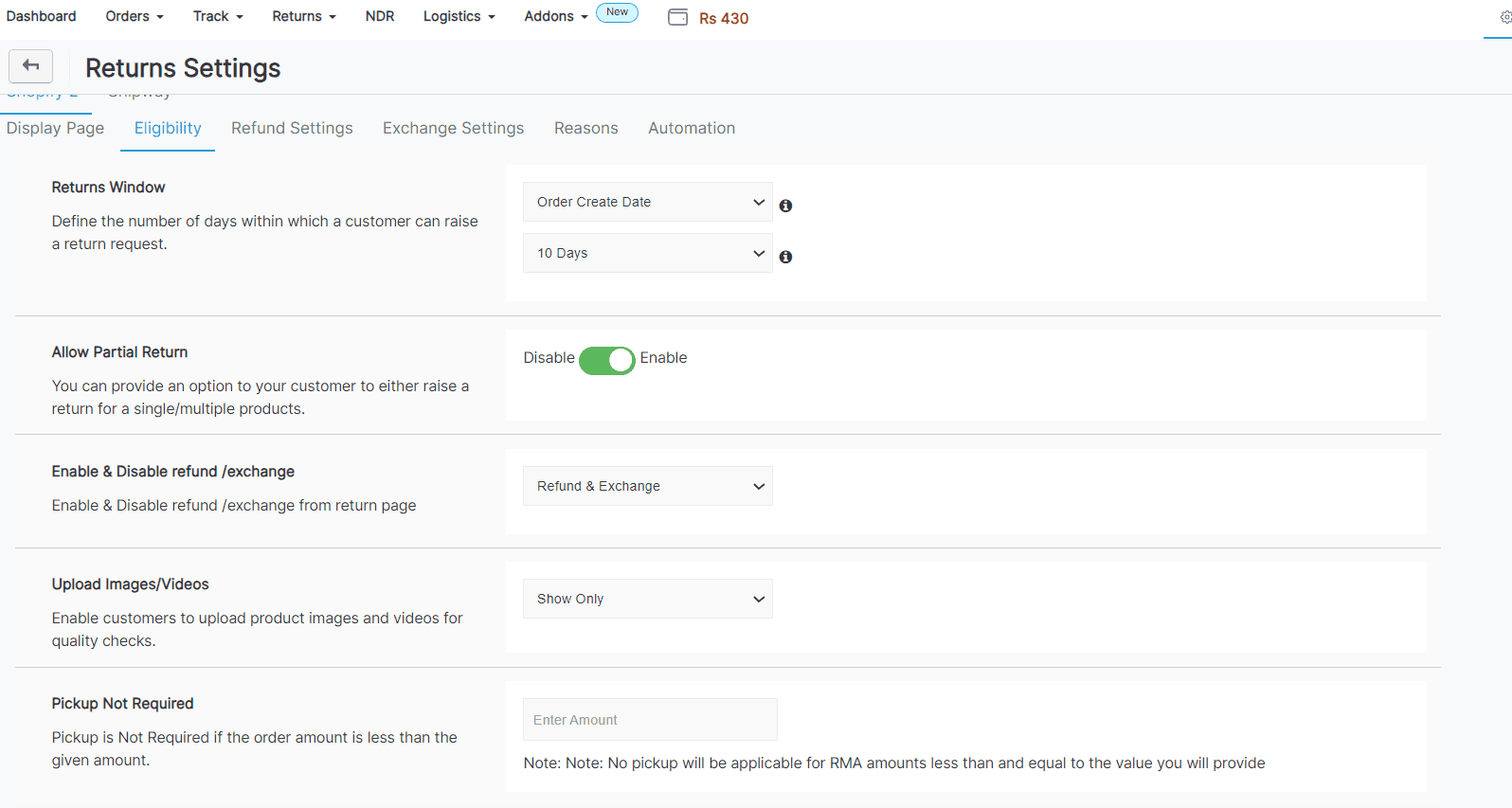
3. Quick refunds:
In the case of returns, refunds determine whether or not the customer will come back. If the customer has to struggle a lot to get there, then the chances of them coming back are pretty slim.
With Shipway, here’s how you can make quick refunds:
- Select the proposition type as the payment: Select all the payment options you want to give customers, through which they will receive their refund. It can be store credits, bank accounts, UPI, Paytm, or gift cards
- Validate bank and UPI details via Cashfree by integrating with Shipway.
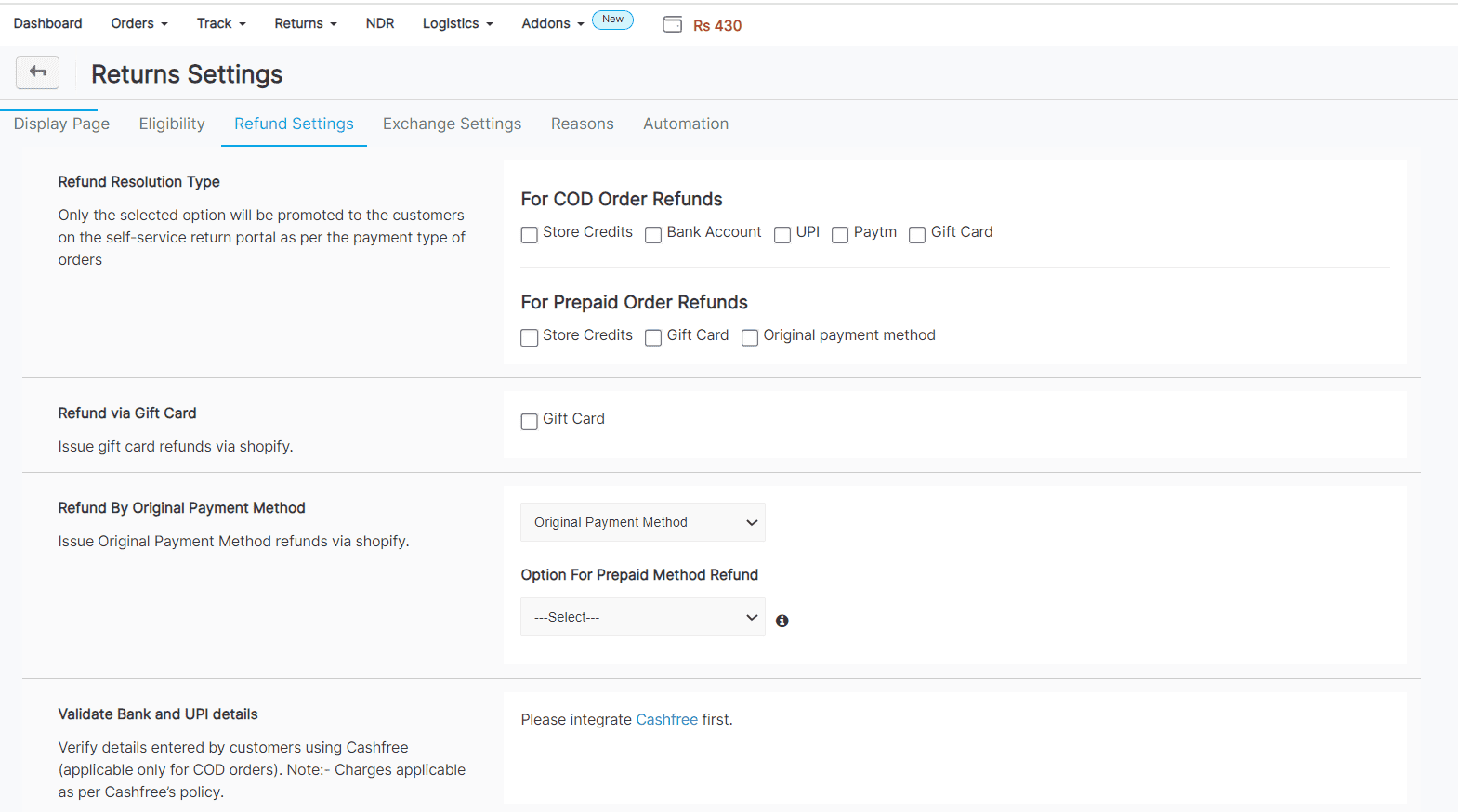
- Allow Auto-pushback of order status to Shopify
- Select the products for which refunds are not applicable
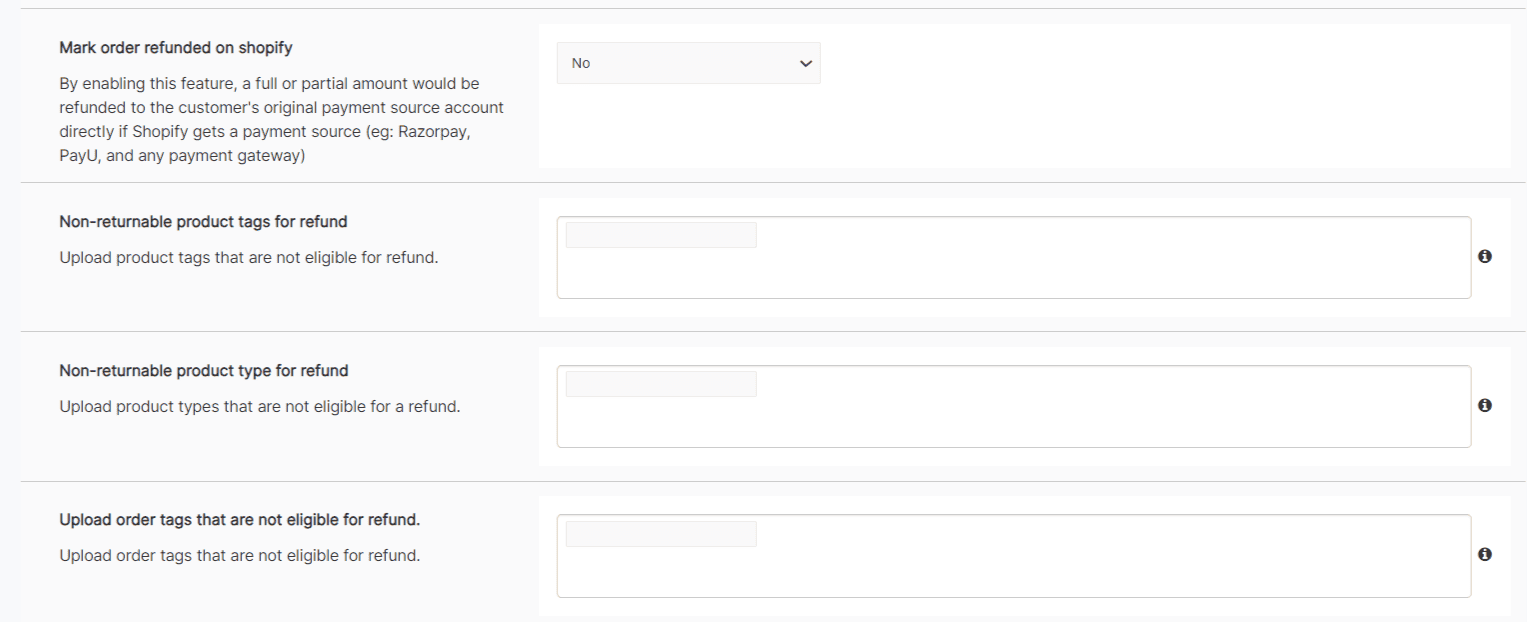
This ensures that refund processing is not the reason for customer churn but rather a tactic to ensure retention!
4. Allow Exchanges:
It is a well-known fact that returns are unfavorable to a business as these are essentially losses, not just in terms of reverse logistics charges but also due to damage to products, inventory flow disruption, etc.
Exchanges can be tricky for D2C brands but become super simple with a return automation solution like Shipway. Shipway helps you with exchanges as follows:
- With Shipway sellers can determine what to replace the exchange product with
- The same item
- Other variants
- A different product.
They can also choose to hide variants that are stocked out or ones with a higher price
- Auto-push back order status on Shopify
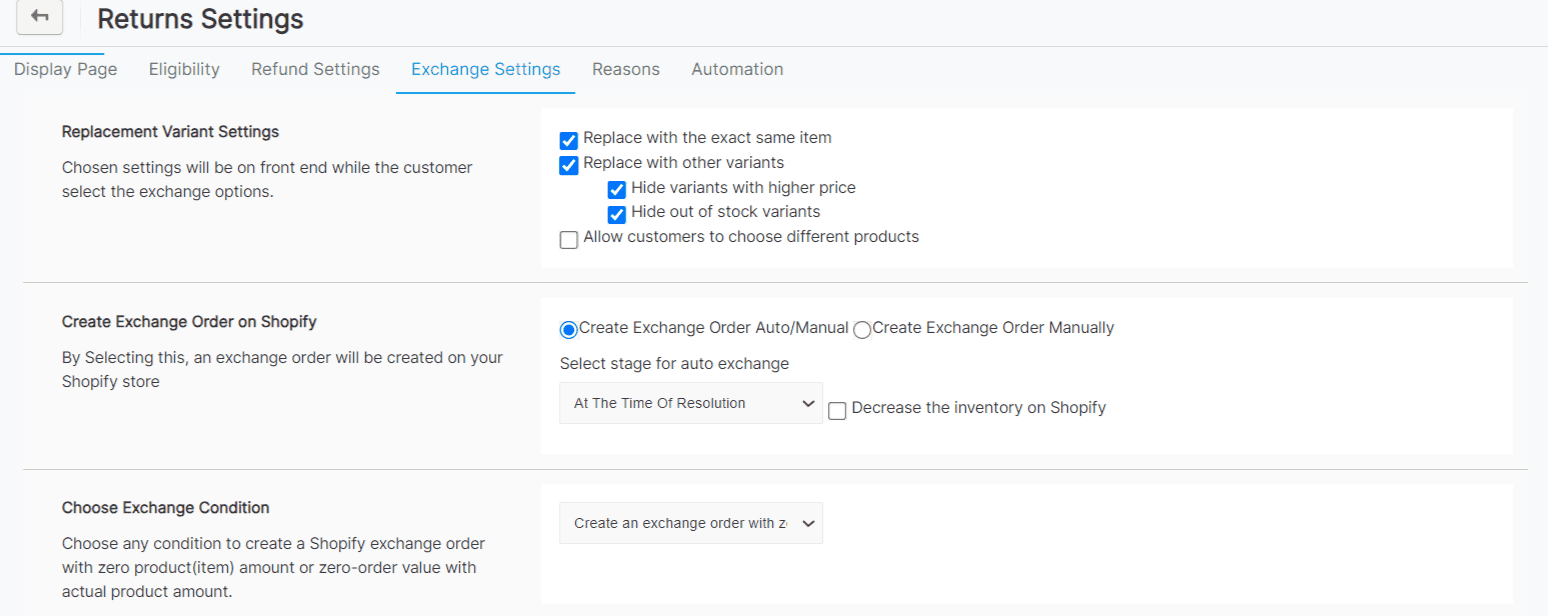
- Determine products that cannot be exchanged.

In case the product is out of stock, you can also give them store credit for that amount This helps businesses save money now and encourages customers to shop with them again through store credit.
5. Communicate with customers at every step:
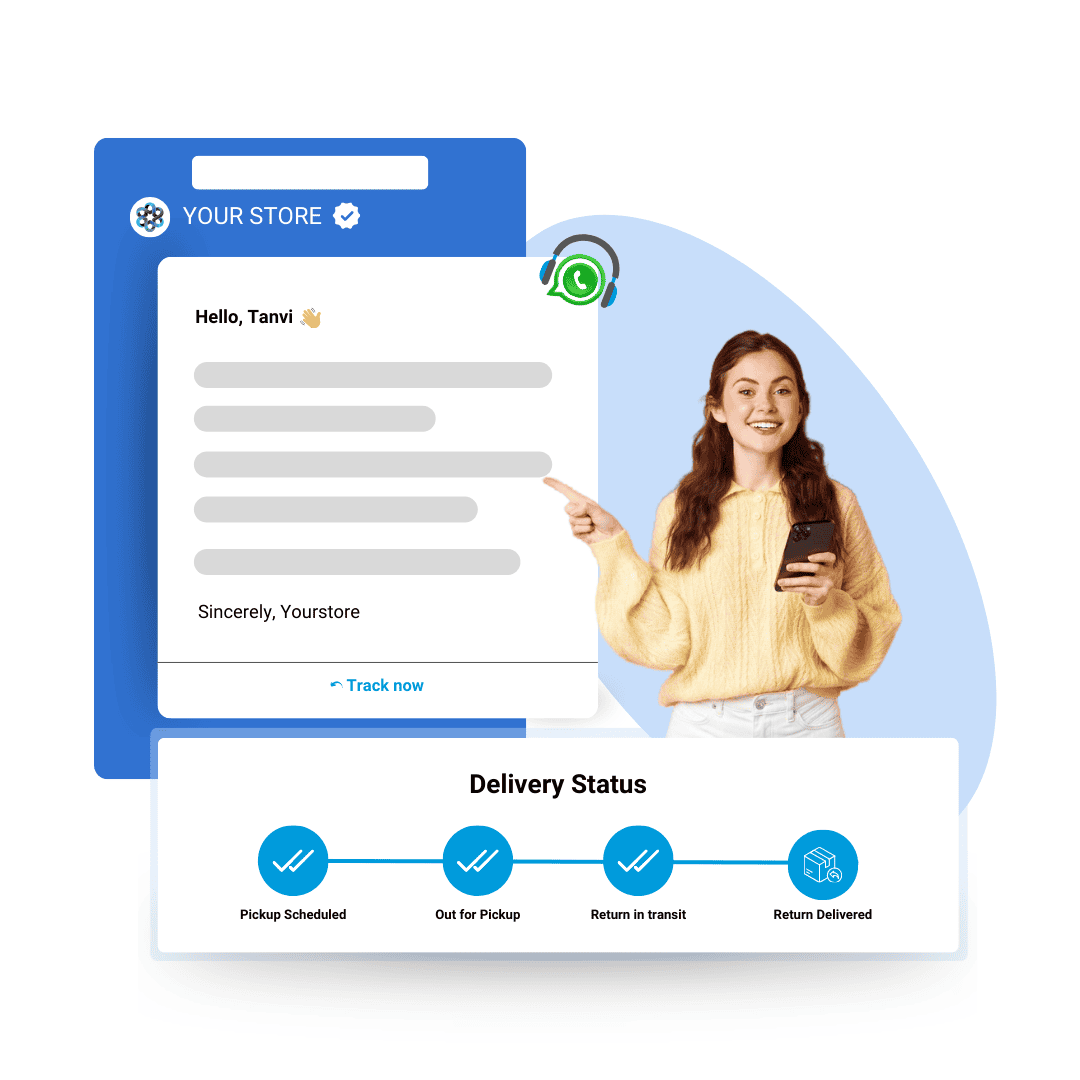
Alleviating customer anxiety is especially crucial in the case of a return, especially after the return is picked up because at that time the customer is waiting for the money or exchange back.
Shipway helps you control customer anxiety by sending customers regular order alerts at every step of the return process. Apart from that, via Shipway you can also record the reason for the return.
Conclusion
At last, as we know, happy customers are repeat customers, and a smooth return process helps with just that!
Return automation takes the hassle out of your reverse logistics to not only make your return process smooth but also help improve your customer experience! This not only boosts customer satisfaction but also saves you time and money.
Make returns a breeze for you and your customers with Shipway!
You may also like…
Top Third-Party Logistics Companies in India for E-commerce (2025)
Choosing the right third-party logistics company is crucial for any eCommerce business in India. A reliable 3PL partner ensures faster deliveries,...
read moreA Complete Guide to India’s leading E-Commerce Courier Services
E-commerce growth in India is entering a new phase marked by expanding customer bases in smaller cities, advanced delivery technologies, and...
read moreRegional Logistics in India: Challenges & Solutions for Tier-2/3 Cities
E-commerce in India is no longer confined to metro cities; it is witnessing its strongest wave of growth in Tier 2 and Tier 3 cities. With the...
read more
![The Complete Guide to Returns Automation (Refund & Exchange) in eCommerce [2025]](https://blog.shipway.com/wp-content/uploads/2024/06/Tips-for-Optimizing-Video-Content-on-Social-Media-10.jpg)


